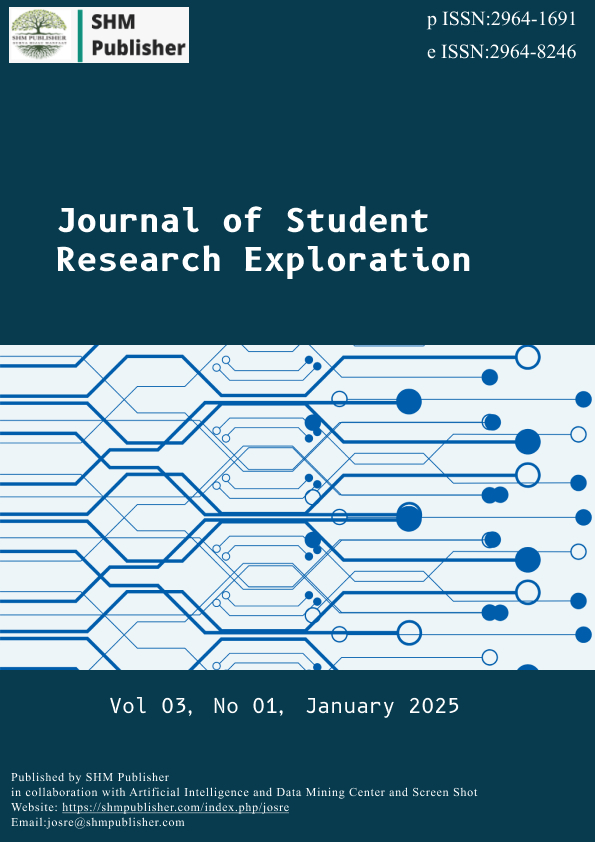Support vector machine on two-class classification problem to determine an otaku
Main Article Content
Abstract
Machine Learning has become a popular topic among academics and practitioners in recent years. This paper describes the use of SVM for otaku classification problem. The dataset used is a dummy dataset created with a python programme. In this research, SVM will be used as a model. The model aims to predict whether someone is an otaku or not, based on several attributes. The optimal parameters are obtained after several experiments. The parameters consist of kernel=‘poly’, C=0.1, gamma=‘auto’, degree=2, and attribute class_weight=None. The performance obtained by applying the above parameters is 100% accuracy.
Article Details

This work is licensed under a Creative Commons Attribution-ShareAlike 4.0 International License.
References
H.-B. Ly, T.-T. Le, H.-L. T. Vu, V. Q. Tran, L. M. Le, and B. T. Pham, “Computational Hybrid Machine Learning Based Prediction of Shear Capacity for Steel Fiber Reinforced Concrete Beams,” Sustainability, vol. 12, no. 7, p. 2709, Mar. 2020, doi: 10.3390/su12072709.
D. Van Dao et al., “A Sensitivity and Robustness Analysis of GPR and ANN for High-Performance Concrete Compressive Strength Prediction Using a Monte Carlo Simulation,” Sustainability, vol. 12, no. 3, p. 830, Jan. 2020, doi: 10.3390/su12030830.
D. Dalbergio, M. N. Hayati, and Y. N. Nasution, “KLASIFIKASI LAMA STUDI MAHASISWA MENGGUNAKAN METODE ALGORITMA C5.0 PADA STUDI KASUS DATA KELULUSAN MAHASISWA FAKULTAS MATEMATIKA DAN ILMU PENGETAHUAN ALAM UNIVERSITAS MULAWARMAN TAHUN 2017,” Pros. Semin. Nas. Mat. dan Stat. Vol 1 Pros. Semin. Nas. Mat. dan Stat., May 2019, [Online]. Available: https://jurnal.fmipa.unmul.ac.id/index.php/SNMSA/article/view/524
I. M. Parapat, M. T. Furqon, and S. Sutrisno, “Penerapan Metode Support Vector Machine (SVM) Pada Klasifikasi Penyimpangan Tumbuh Kembang Anak,” J. Pengemb. Teknol. Inf. dan Ilmu Komput., vol. 2, no. 10 SE-, pp. 3163–3169, Feb. 2018, [Online]. Available: https://j-ptiik.ub.ac.id/index.php/j-ptiik/article/view/2577
S. Irawan, H. Antono, and Y. Windrawanto, “DAMPAK POSITIF OTAKU ANIME TERHADAP PERILAKU MAHASISWA,” J. KONSELING GUSJIGANG, vol. 8, no. 1, Aug. 2022, doi: 10.24176/jkg.v8i1.7826.
H. Niu, Y. Chiang, and H. Tsai, “An Exploratory Study of the Otaku Adolescent Consumer,” Psychol. Mark., vol. 29, no. 10, pp. 712–725, Oct. 2012, doi: 10.1002/mar.20558.
S. Ramírez-Gallego, B. Krawczyk, S. García, M. Woźniak, and F. Herrera, “A survey on data preprocessing for data stream mining: Current status and future directions,” Neurocomputing, vol. 239, pp. 39–57, May 2017, doi: 10.1016/j.neucom.2017.01.078.
A. Aprihartha, “Penyelesaian Masalah Ketidakseimbangan Data Melalui Teknik Oversampling dan Undersampling pada Klasifikasi Siswa Tidak Naik Kelas,” J. Tek. Ibnu SIna, vol. 9, no. 1, 2024, doi: https://doi.org/10.36352/jt-ibsi.v9i01.807.
S. Guan, X. Zhao, Y. Xue, and H. Pan, “AWGAN: An adaptive weighting GAN approach for oversampling imbalanced datasets,” Inf. Sci. (Ny)., vol. 663, p. 120311, Mar. 2024, doi: 10.1016/j.ins.2024.120311.
Q. H. Nguyen et al., “Influence of data splitting on performance of machine learning models in prediction of shear strength of soil,” Math. Probl. Eng., vol. 2021, pp. 1–15, 2021.
W. Chen et al., “Landslide susceptibility modelling using GIS-based machine learning techniques for Chongren County, Jiangxi Province, China,” Sci. Total Environ., vol. 626, pp. 1121–1135, Jun. 2018, doi: 10.1016/j.scitotenv.2018.01.124.
K. Taalab, T. Cheng, and Y. Zhang, “Mapping landslide susceptibility and types using Random Forest,” Big Earth Data, vol. 2, no. 2, pp. 159–178, Apr. 2018, doi: 10.1080/20964471.2018.1472392.
N. N. Vasu and S.-R. Lee, “A hybrid feature selection algorithm integrating an extreme learning machine for landslide susceptibility modeling of Mt. Woomyeon, South Korea,” Geomorphology, vol. 263, pp. 50–70, Jun. 2016, doi: 10.1016/j.geomorph.2016.03.023.

